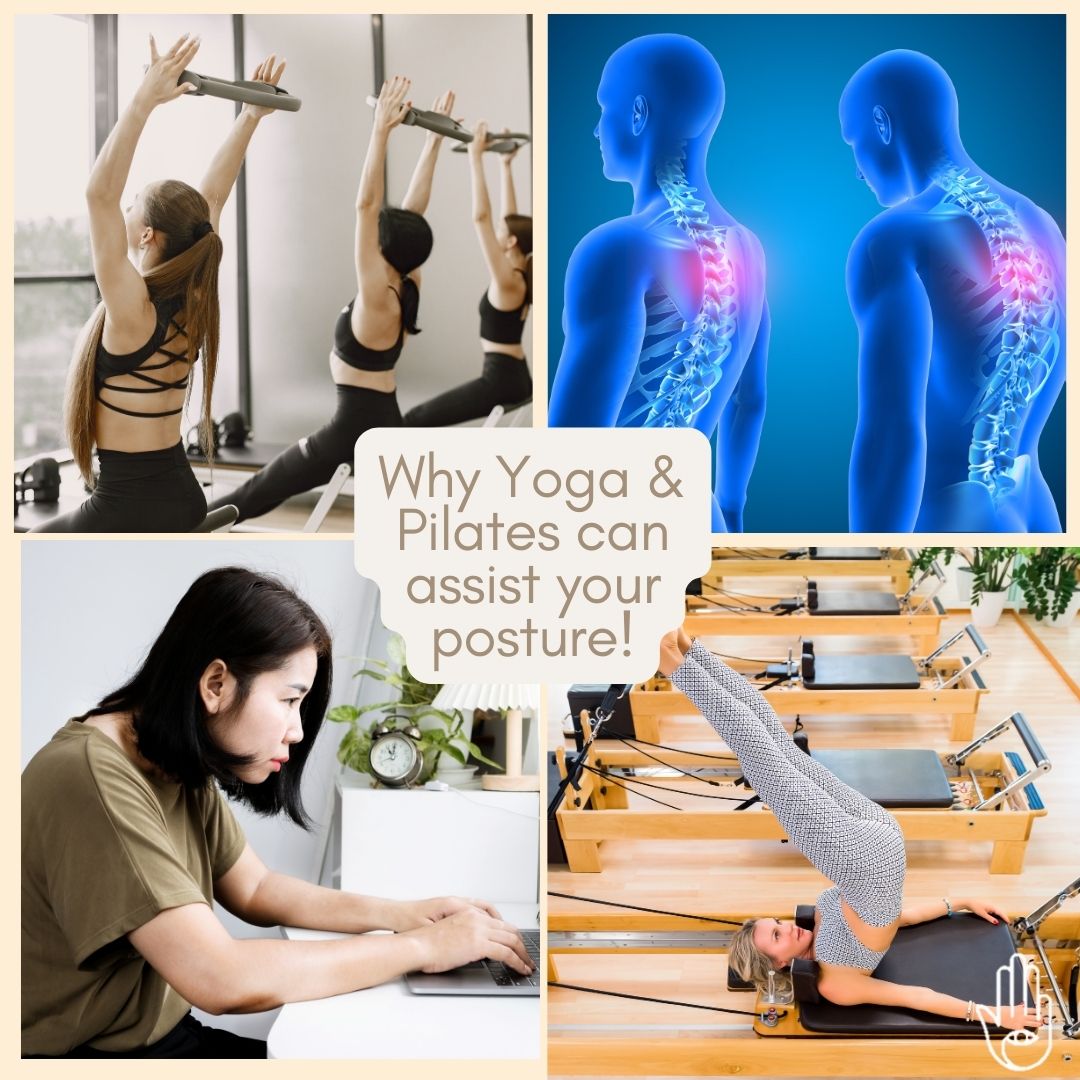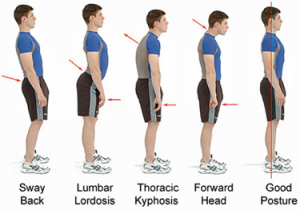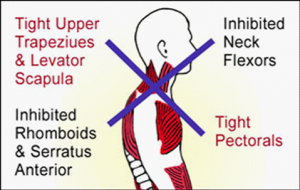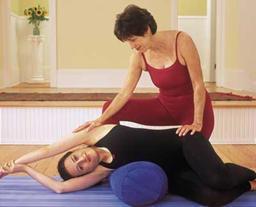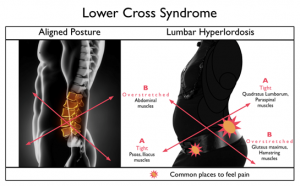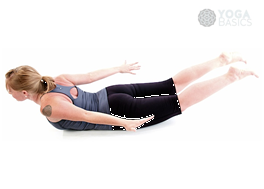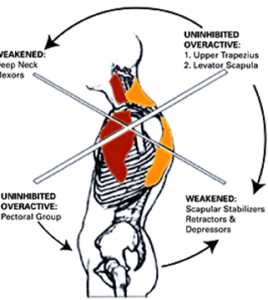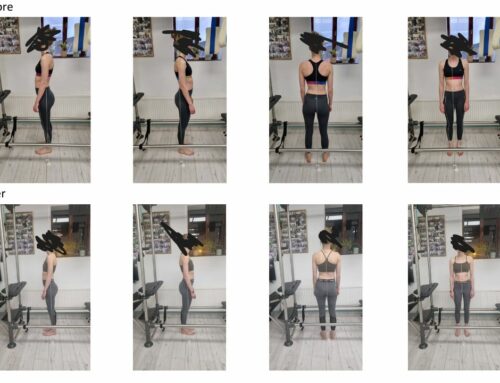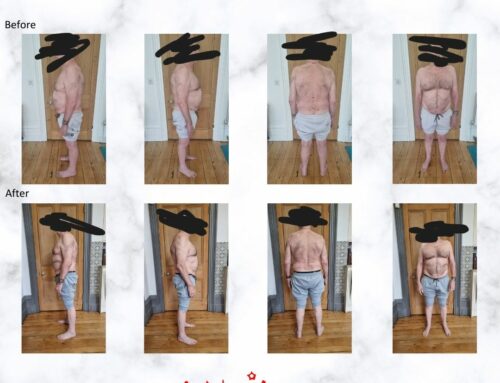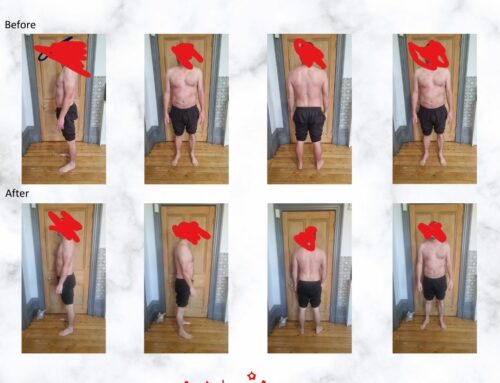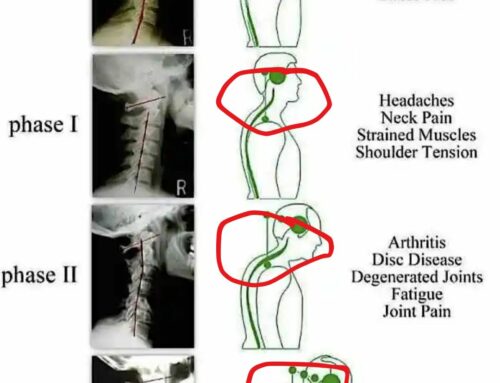With Yoga and pilates now in the top ten lists for pursuits, are we ready to handle the people who come to our classes. If we are in constant pain or are getting repetitive injuries, one of the key points we need to consider is posture. If our posture is out of sync, our organs won’t sit right and our movement patterns won’t execute correctly. When there is compression in one area, there will be laxity and instability in another area. I have a high number of clients who are either sat all day at a desk or doing intense sport e.g. Cross – Fit, etc then they come to Yoga and pilates.
Cross fit, marathons, and sitting for long periods of time are not incorrect but we need ensure the body is ready to deal with these stresses. This is where yoga and pilates can assist.
Do you recognize any of the postures below?
“Posture is the position from which movement begins and ends. Ideal posture is that state of muscular and skeletal balance which protects the supporting structures of the body against injury or progressive deformity, irrespective of the attitude in which these structures are working or resting. It is during a state of ideal posture that the musculoskeletal system will function most efficiently.” Paul Chek
I have chosen two postures to look at:
Upper cross syndrome
This figure shows the imbalance between the trunk flexes and trunk extensors. As the upper abdominal musculature and fasciaial areas becomes progressively stronger and shorter than their antagonist, (opposite) the following postural faults can be seen. I personally would not be encouraging this type posture to do more flexion or flex type exercises.
Sign S of Upper Cross Syndrome
A Short and tight upper abdominals
B Depressed sternum
C Forward head
D An increased thoracic kyphosis, often with its apex at T7 to T9.
If I were teaching someone with upper cross syndrome I would avoid forward bends or forward flexion until they have lengthened the front line of the body. Also look at the position of the humeral head (top of arm bone) and the shoulders. Choosing better hand positions like palms facing in or forwards in pilates will assist min not reinsuring the firing pattern. Opening and releasing the side waste either using the pilates arc barrel or simple side work yin style with a bolster plus passive shoulder flexion should start to restore your kyphosis and forwards head. If your humeral heads sit forwards, you wont see your top bra line when standing sideways in a mirror, try it?
The heels of the hands also will not connect when hands are interlaced behind the back if you or your clients have Upper cross syndrome.
Lower Cross Syndrome
Lower Cross Syndrome is characterized by shortening of the lumber erectors, Iliopsoas, Rectus femoris and tensor fasciae latae with lengthening of the lower abdominal muscles, hamstrings and gluts. Most people with Lower Cross Syndrome also have Upper Cross Syndrome. This posture is frequently seen in exercisers who spend a lot of time in the gym exercising incorrectly, and using fixed axis machines. I am continually told by clients that they have short hamstrings, is this really the case? Look below, in most cases the hamstrings will be overstretched into what feels and looks like ‘short and tight’ but they are actually ‘long and taut’ or ‘long and weak’. Endless sit-ups and crunches are not going to flatten the tummy at all with this posture, they will just increase the faulty firing patterns and work the over excited muscles. Lower cross syndrome can be seen clearly on chaturanga too, even with core connection the imbalance of the postural cures and the underlying tissues that lie around the area will cause the back to dip.
Are we really going to give our yogis locusts with lower cross syndrome? Look what will happen, we will continue to shorten and tighten the lower back which is already over firing, We need to work on the whole backline so prone dart or four point kneeling with superman. On the prone dart I would put the palms down in order to create space and keep the shoulders open.
Have we really progressed or have we regressed?
The tribal woman is able to balance pots and walk with a lovely rhythmic gait pattern, look at her neck position; it’s a beautiful continuation of the thoracic. A perfect version of dynamic tadasana.
How a correctible exercise Yoga programme can help?
A corrective exercise Yoga programme will work on the body’s imbalances with focus on the tonic and phasic muscle groups. The tonic muscles tend to be short and tight areas, the phasic muscles tend to be long and weak. We are all made up of zillions of cells and are completely different, one size does not fit all; it’s always better to access rather than guess.
Check out our online courses here:

